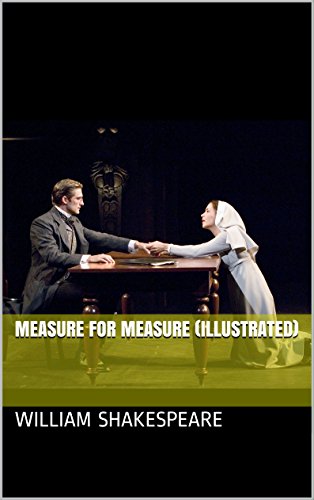-
Measure for Measure
William Shakespeare
eBook (Shaf Shakespeare Library, Sept. 2, 2016)William Shakespeare was born in Stratford-upon-Avon in April 1564, and his birth is traditionally celebrated on April 23. The facts of his life, known from surviving documents, are sparse. He was one of eight children born to John Shakespeare, a merchant of some standing in his community. William probably went to the King’s New School in Stratford, but he had no university education. In November 1582, at the age of eighteen, he married Anne Hathaway, eight years his senior, who was pregnant with their first child, Susanna. She was born on May 26, 1583. Twins, a boy, Hamnet ( who would die at age eleven), and a girl, Judith, were born in 1585. By 1592 Shakespeare had gone to London working as an actor and already known as a playwright. A rival dramatist, Robert Greene, referred to him as “an upstart crow, beautified with our feathers.” Shakespeare became a principal shareholder and playwright of the successful acting troupe, the Lord Chamberlain’s Men (later under James I, called the King’s Men). In 1599 the Lord Chamberlain’s Men built and occupied the Globe Theater in Southwark near the Thames River. Here many of Shakespeare’s plays were performed by the most famous actors of his time, including Richard Burbage, Will Kempe, and Robert Armin. In addition to his 37 plays, Shakespeare had a hand in others, including Sir Thomas More and The Two Noble Kinsmen, and he wrote poems, including Venus and Adonis and The Rape of Lucrece. His 154 sonnets were published, probably without his authorization, in 1609. In 1611 or 1612 he gave up his lodgings in London and devoted more and more time to retirement in Stratford, though he continued writing such plays as The Tempest and Henry VII until about 1613. He died on April 23 1616, and was buried in Holy Trinity Church, Stratford. No collected edition of his plays was published during his life-time, but in 1623 two members of his acting company, John Heminges and Henry Condell, put together the great collection now called the First Folio.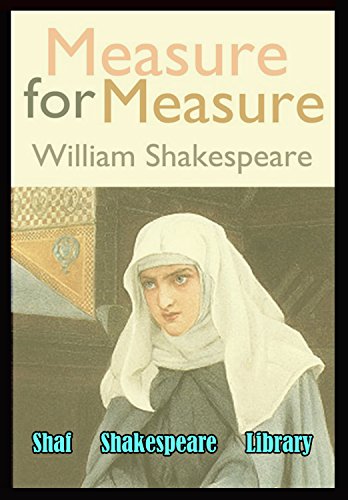
-
Measure for Measure
William Shakespeare
eBook (, Dec. 29, 2019)Measure for Measure is a play William Shakespeare, believed to have been written in 1603 or 1604. It was originally classified as a comedy, but is now also classified as one of Shakespeare's problem plays. The play deals with the issues of mercy, justice, truth and their relationship to pride and humility: "Some rise sin, and some virtue fall"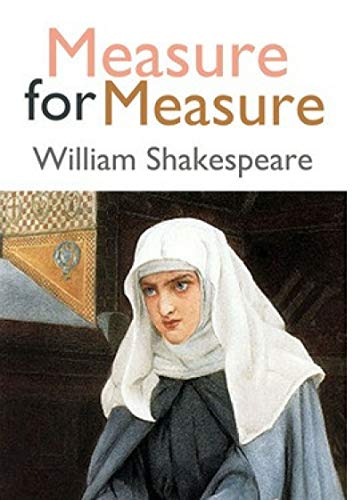
-
Measure for Measure
William Shakespeare
eBook (, May 3, 2014)SHAKESPEARE'S MEASURE FOR MEASURE:--Complete & Unabridged, formatted for kindle to improve your reading experience --Linked Table of Contents to navigate easilyBOOK DESCRIPTION:Measure for Measure is a play by William Shakespeare, believed to have been written in 1603 or 1604. It was (and continues to be) classified as comedy, but its mood defies those expectations. As a result and for a variety of reasons, some critics have labelled it as one of Shakespeare's problem plays.The play deals with the issues of mercy, justice, and truth and their relationship to pride and humility: "Some rise by sin, and some by virtue fall".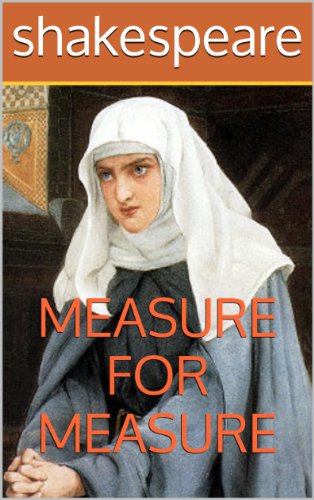
-
Measure for Measure
William Shakespeare, Jonathan Bate, Eric Rasmussen
eBook (Brand: Modern Library, Sept. 12, 2018)Measure for Measure is a play by William Shakespeare, believed to have been written in 1603 or 1604. It was originally classified as a comedy, but is now also classified as one of Shakespeare's problem plays.The play deals with the issues of mercy, justice, truth and their relationship to pride and humility: "Some rise by sin, and some by virtue fall"
-
Measure for Measure
William Shakespeare
eBook (, June 7, 2015)*This Book is annotated (it contains a detailed biography of the author). *An active Table of Contents has been added by the publisher for a better customer experience. *This book has been checked and corrected for spelling errors. Measure for Measure is a play by William Shakespeare, believed to have been written in 1603 or 1604. Originally published in the First Folio of 1623, where it was listed as a comedy, the play's first recorded performance occurred in 1604. The play's main themes include justice, "mortality and mercy in Vienna," and the dichotomy between corruption and purity: "some rise by sin, and some by virtue fall." Mercy and virtue predominate, since the play does not end tragically.Measure for Measure is often called one of Shakespeare's problem plays. It was, and continues to be, classified as comedy, though its tone and setting defy those expectations.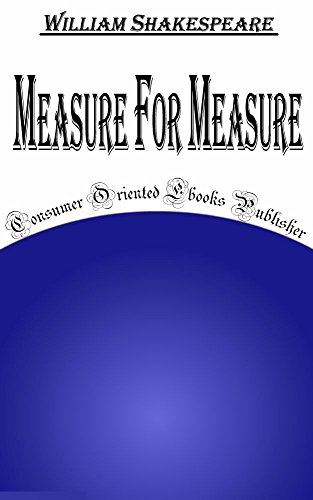
-
Measure for Measure
William Shakespeare
Hardcover (Prince Classics, May 9, 2019)Measure for Measure is a play by William Shakespeare, believed to have been written in 1603 or 1604. It was originally classified as a comedy, but is now also classified as one of Shakespeare's problem plays.The play deals with the issues of mercy, justice, truth and their relationship to pride and humility: "Some rise by sin, and some by virtue fall"
-
Measure for Measure
William Shakespeare, Brian Gibbons
Paperback (Cambridge University Press, June 28, 1991)Since the rediscovery of Elizabethan stage conditions early this century, admiration for Measure for Measure has steadily risen. It is now a favorite with the critics and has attracted widely different styles of performance. At one extreme the play is seen as a religious allegory, at the other it has been interpreted as a comedy protesting against power and privilege. Brian Gibbons focuses on the unique tragi-comic experience of watching the play, the intensity and excitement offered by its dramatic rhythm, the reversals and surprises that shock the audience even to the end. The introduction describes the play's critical reception and stage history and how these have varied according to prevailing social, moral and religious issues, which were highly sensitive when Measure for Measure was written, and have remained so to the present day. M
M
-
Measure for measure
William Shakespeare
eBook (Vishv Books Private Limited, June 25, 2020)Measure for Measure is a play by William Shakespeare, believed to have been written in 1603 or 1604. Originally published in the First Folio of 1623, where it was listed as a comedy, the play's first recorded performance occurred in 1604.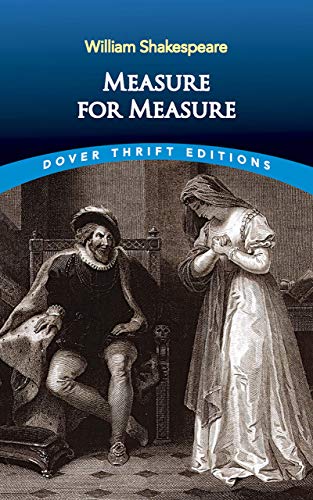
-
Measure for Measure
William Shakespeare
eBook (Vishv Books Private Limited, June 23, 2020)Measure for Measure is a play by William Shakespeare, believed to have been written in 1603 or 1604. It was originally classified as a comedy, but is now also classified as one of Shakespeare's problem plays.The play deals with the issues of mercy, justice, truth and their relationship to pride and humility: "Some rise by sin, and some by virtue fall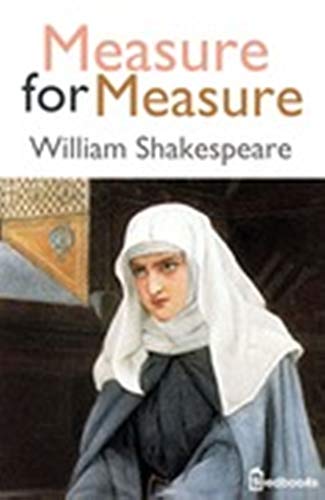
-
Measure for Measure
William Shakespeare
eBook (Vishv Books Private Limited, June 9, 2016)Shakespeare’s dark comedy ‘Measure for Measure’ is centred around a love story that leads to marriage and ends with complicated denouements superintended by a benevolent Duke.Perhaps the most important element in this comedy is a new intensity of dialogue, the overt religious and legal concerns with variety of plot and sub-plot.In the opinion of most judges, the comedy reaches its precise conclusion only with difficulty, with adroitness, compromise or dramatic necessity.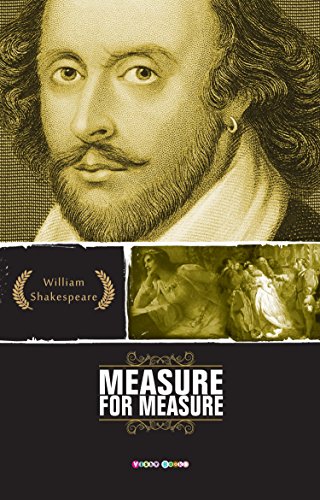
-
Measure for Measure
William Shakespeare, Robert S. Miola
Paperback (Apprentice House, Jan. 15, 2007)Clowns and magistrates, nuns and prostitutes, saints and sinners-all > take the stage in Measure for Measure, Shakespeare's provocative > meditation on justice, law, and mercy. This modernized text, newly > edited from the First Folio (1623), provides a complete record of > textual notes and ample commentary. Concise and helpful appendices > discuss language and rhetoric, sources and adaptations, the play in > performance, and characters; they include a fully annotated > bibliography of print and Internet sources. An accompanying website > off ers additional resources: www.loyola.edu/measure. Through "Aperio > Series: Loyola Humane Texts," Loyola College in Maryland publishes > important and illuminating Humanities texts that have been edited, > annotated, and/or translated by the College's students in > collaboration with faculty. Students work with faculty to design and > publish the texts. The texts are intended for all readers but should > be of particular interest and use to college students and classes. > Contributors: Jedidiah D. Adams, Sarah P. Biernacki, Hannah W. > Blauvelt, Amanda H. Cammarata, Alison J. Koentje, Brian J. Olszak, > Daniel J. Procaccini, Paul J. Zajac. Edited by Robert S. Miola >
-
Measure for Measure
William Shakespeare, D. Fog
eBook (Green Booker Publishing, Dec. 10, 2015)Measure for Measure is a play by William Shakespeare, believed to have been written in 1603 or 1604. Originally published in the First Folio of 1623, where it was listed as a comedy, the play's first recorded performance occurred in 1604. The play's main themes include justice, "mortality and mercy in Vienna," and the dichotomy between corruption and purity: "some rise by sin, and some by virtue fall." Mercy and virtue predominate, since the play does not end tragically. Measure for Measure is often called one of Shakespeare's problem plays. It was, and continues to be, classified as comedy, though its tone and setting defy those expectations.